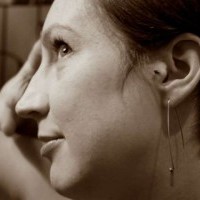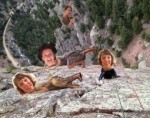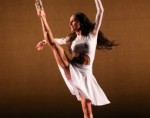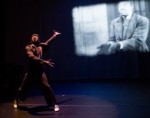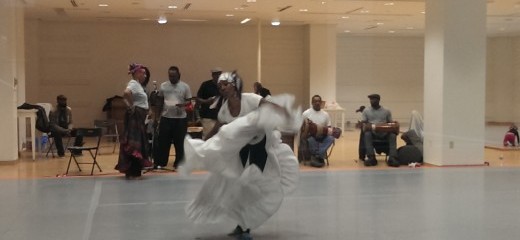
Perspectives on Dance in Public Places
by Eleanor Goudie-Averill and Becca Weber
Photo on front page: Project Moshen, photo by Anne-Marie Gover. Above: Kùlú Mèlé, photo by Becca Weber.Dance in Public Places (DiPP) is an initiative of Dance USA/Philadelphia that gave 37 Philadelphia area dance companies space to rehearse daily on the second level of the Gallery Mall for the entire month of February. As two dancer/choreographers who were offered the chance to rehearse in the space, we were curious about the experience of the event from the perspectives of everyone involved: dancers, choreographers, onlookers, and ambassadors. Everyone we spoke with was very grateful for the opportunity and the interchanges that DiPP offered.
When preparing to conduct interviews for this piece, we were most curious about the experience of being observed and how it does or does not change the process.
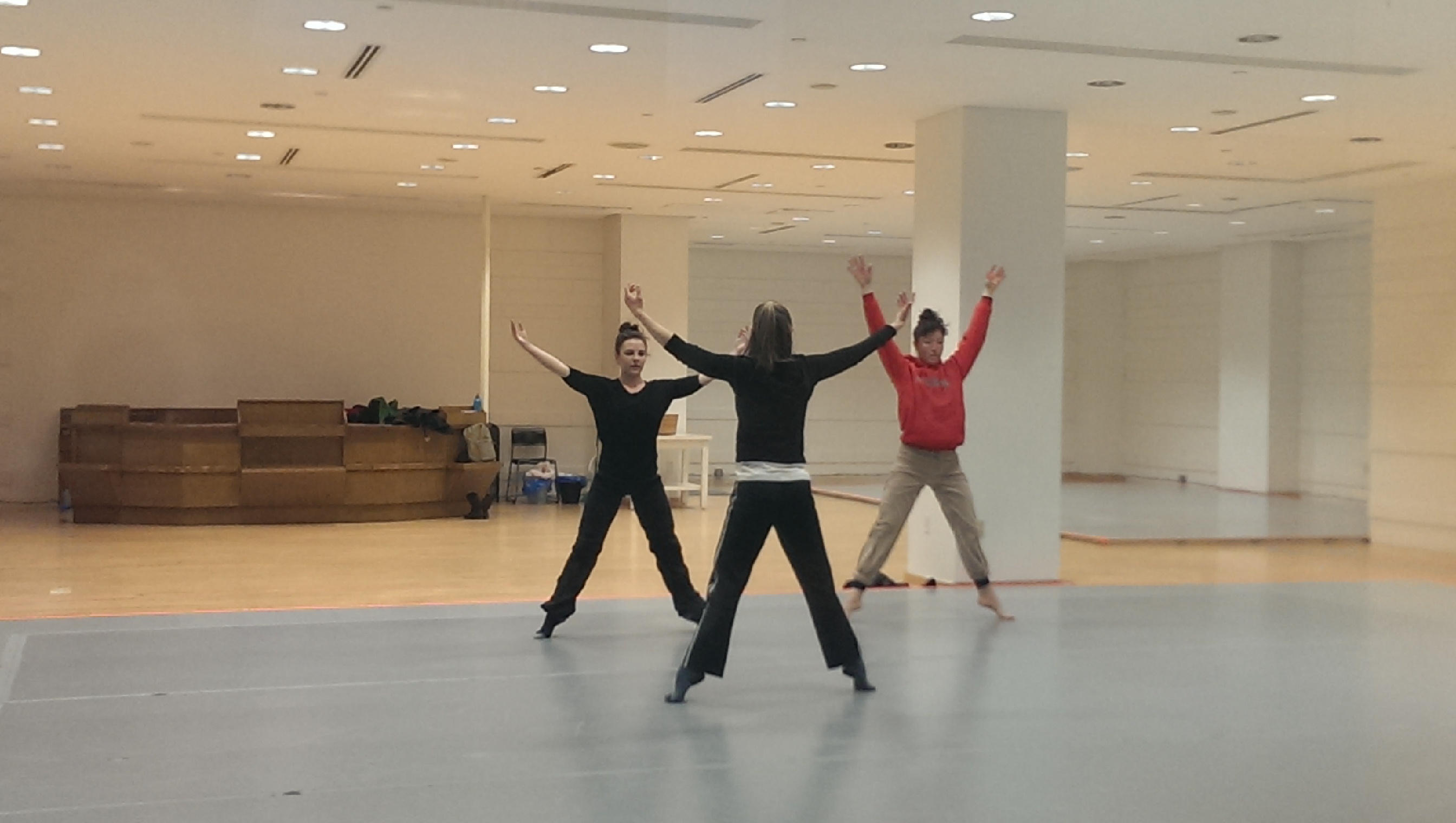
Stone Depot Dance Lab Photo: Becca Weber
As choreographers (Eleanor for Stone Depot Dance Lab, Becca for Somanaut Dance), both of us were initially worried about maintaining an authenticity in the process in public, and we wanted to hear from everyone who was involved how they perceived that phenomenon. During Becca’s rehearsal, she found herself absorbed in the making, but every so often, she would glance over and see someone smile or wave. She said that made it feel like a generous undertaking: a simple sharing of the process with the public, which was gratifying. Eleanor also participated as a dancer with Group Motion, Tori Lawrence + Co, and Chisena Danza. Though her experience varied with each group, she felt the rehearsals were made vibrant by a sense of situating the dance community within the larger cultural world of Philadelphia.
As a whole, we found that the energy involved in being viewed became a part of the process too--making rehearsals very productive. Many of the choreographers we spoke with felt the same.
Below is a selection of interviews we conducted with other participants throughout the month.
.jpg)
Somanaut Dance Photo: Tori Lawrence
The Choreographers:
Antoinette M. Coward-Gilmore, Artistic Director of Danse4Nia
It is always rewarding to see the organic reaction of onlookers who have never seen Danse4Nia or even concert dance in this element. The rehearsal is the laboratory for choreographers and dancers to create. It is a safe haven where the true nature of what we do is explored.
I truly believe the creative process in itself is intriguing enough to any onlookers without having to add extras or elements that would please the viewer. The fourth wall is stripped, the lights are gone, the curtain has disappeared and you as the artist must deal with the true reaction you see from the viewer. The response is real and valid and it gives the artist fuel to make real choices about the intent behind what we are doing at the time. Believe it or not, many people in our city are unaware that dance is extremely alive and present in our city to the degree that it is. [DiPP gave us a chance to] be a part of widening the awareness of concert dance in our city.
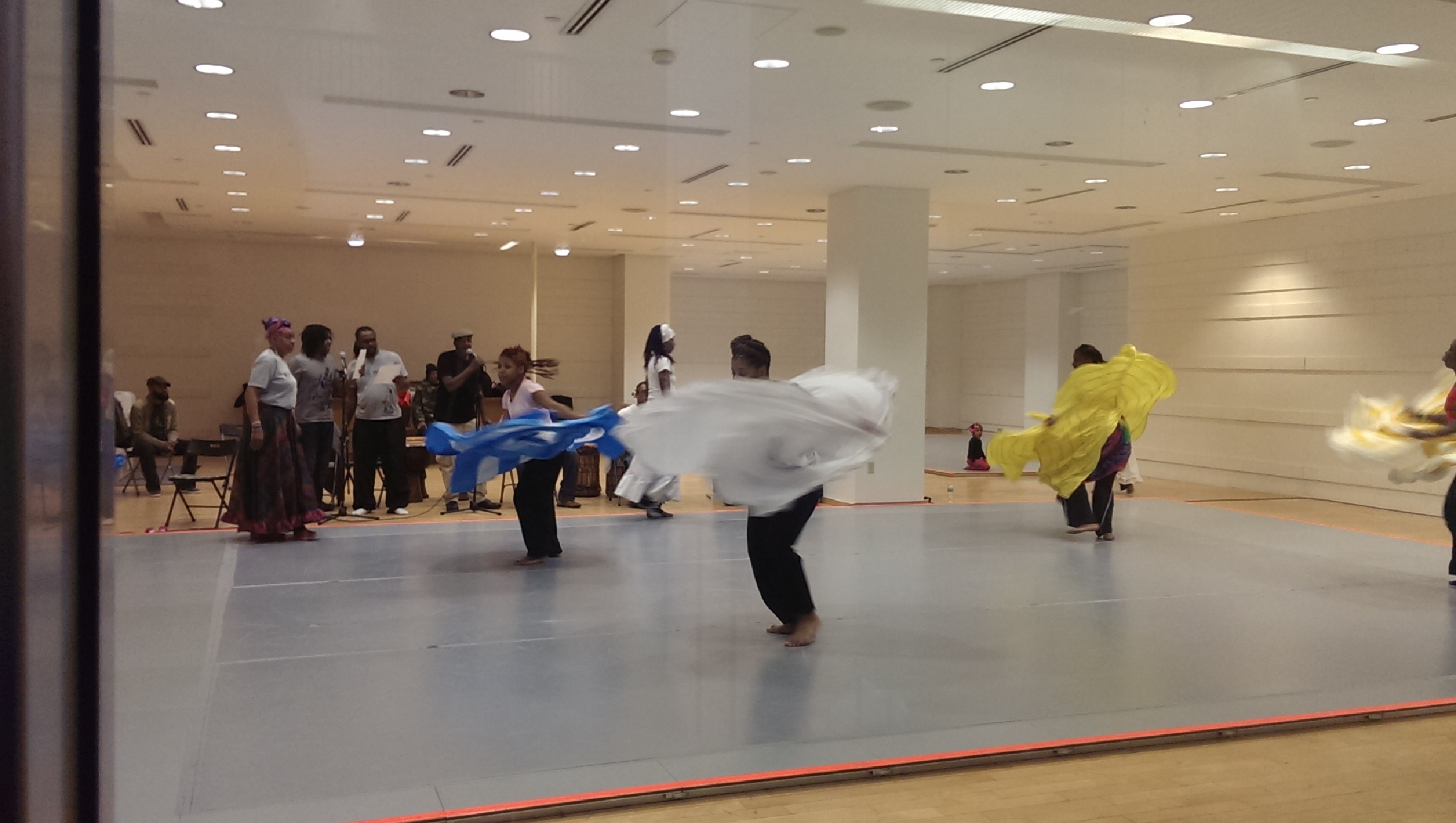
Kùlú Mèlé Photo: Becca Weber
Dorothy Wilkie, Artistic Director of Kùlú Mèlé
Being observed was positive. It's like working through a piece with an audience where you don't have to give your all but you’ve got to give. I started on a new Afro Cuban dance. Everyone had to think and remember, and that can be challenging with an audience. It definitely raises energy.
DiPP gave Kùlú Mèlé great exposure in the Gallery. We had a lot of inquiry about classes and our performances. The floors are amazing to work on. I wish I could have use of them for every rehearsal and performance.
M_Ann-MarieGover.jpg)
RealLivePeople(in)Motion Photo: Anne-Marie Gover
Gina Hoch-Stall, Artistic Director of RealLivePeople(in)Motion
As I prepared rehearsal material [for a new work] for our Dance in Public Places rehearsal I found myself growing more and more anxious about sharing this tender process with outside eyes. However, once we arrived and began moving around I felt like I actually got more comfortable. I was able to tune out the onlookers as I became absorbed in the movement material. I definitely felt a pressure to be moving a lot and making interesting choices but that pressure wasn't as debilitating as I'd predicted--it actually pushed us to work harder. It made me acutely aware of how much a rehearsal process just involves repeating the same sequence of movement over and over again.
A large part of [an open rehearsal’s] appeal stems from getting to be behind-the-scenes and to see the mess of the editing and creating process. The primary difference for RLP(i)M is that when we have open rehearsals we actively involve onlookers in the creation process while Dance in Public Places keeps observers separate.
Annie Wilson, independent choreographer
Being watched definitely puts pressure on us to be moving the whole time, to be focusing more on making movement, teaching movement, and improvising. It definitely activates my adrenaline. It's fun because it doesn't happen so much in rehearsal. I wonder how much of the material that I generate in Dance in Public Places will make it into the next version of Lovertits, or the final version.
It's especially weird for me because I interact with an audience so much in performance, so to feel kind of like I'm performing (but not really performing) means I can't check in with the people outside. There are times that I just forget about people outside, when we're really grooving on something. And then times when I look out and I can tell people don't really know what to make of what we're doing and I can't contextualize what I'm doing.
I think the level of energy it requires is incredibly useful to me. A trap that I get into in the studio is sloth, for sure. So to feel the pressure to be always moving produces something in me and my collaborators that I don't get at Mascher [Space Cooperative]. Like a different petri dish to be growing cultures in.
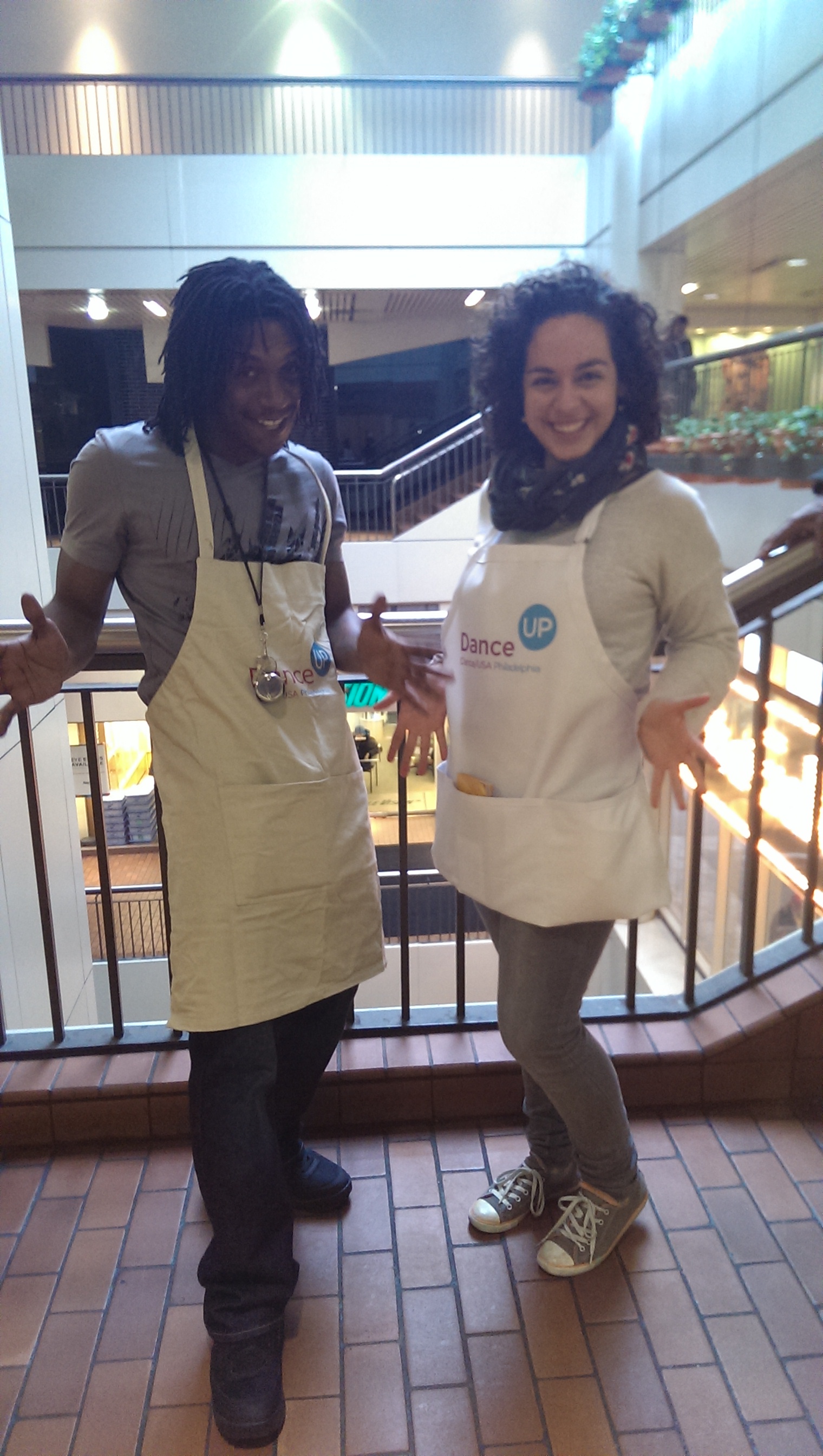
Two DiPP Ambassadors Photo: Becca Weber
The Ambassadors:
Hired by Dance/UP to serve as docents, the ambassadors connect viewers with the artists and the process of dance-making. Their smiling faces greet both artists and onlookers and they are able to offer a unique perspective.
Belle Alvarez
The first reaction people tend to have is, "Where do I sign up?" They ask if it is an open dance class or if they are having some sort of company audition or tryout. I especially love when kids and some teenagers start to dance in response to what they are seeing.
My role as an ambassador is to educate the public about Philadelphia based dance companies. I facilitate audience interaction with the dance company they are seeing [and] I always count between 85-130 people per shift that watch.
The companies that have the most observations are usually the ones with loud music and/or 10+ company members. Kùlú Mèlé, Alchemy Dance Company, and the Jazz Tap Quartet had great responses. I honestly think that genres like experimental concert dance theater tend to be a little bit of a buzz kill outside of the traditional concert dance space. Audience engagement is most successful when what happens within the space is lively and rhythmic.
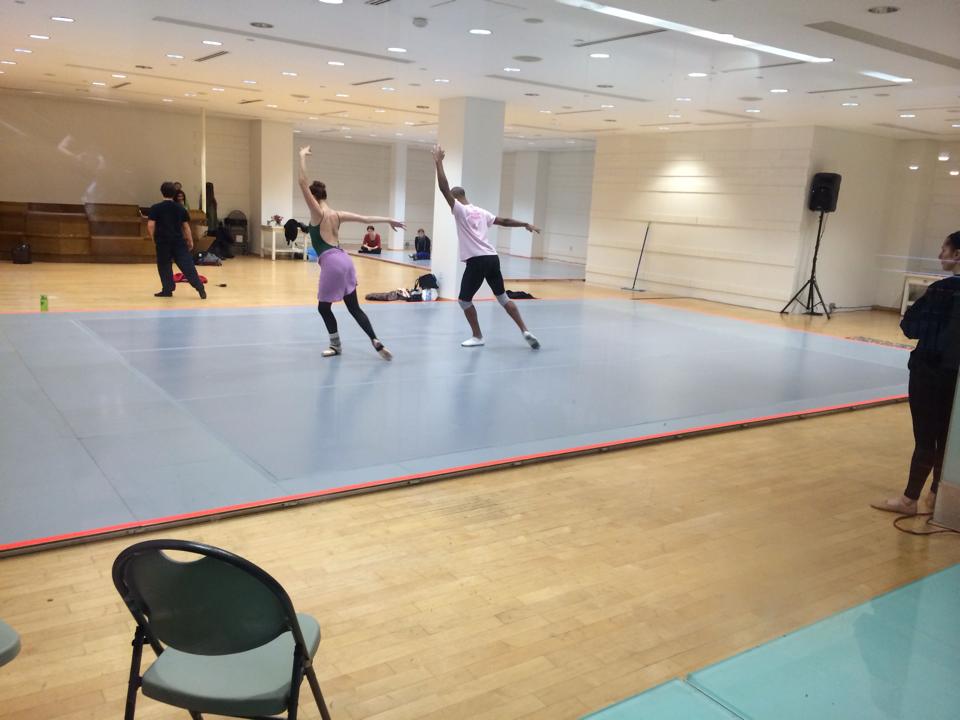
Ballet Fleming Photo: Anne-Marie Gover
Ann-Marie Gover
A mother with her six children stopped by just yesterday and sat on the steps to watch Gabrielle Revlock and Nicole Bindler rehearse. She was telling me how she wants to get her kids into some sort of activity but can’t afford dance classes. Her oldest daughter was signed up for music lessons through the school but then the school cut the program and now she doesn’t know what to do. As enlightening as this program is, it also bring some crucial problems to light. What ARE kids doing for extra curricular activities and how can dance be accessible to them? [As ambassadors] we are educators. This kind of project […] enlightens the passerby, they get to see different forms of dance and what’s happening in the Philadelphia area.
My first week working, a group of girls, who looked like they were maybe 9 to 11 years old, stopped to watch BodyFields Performance Collective, an interdisciplinary collaboration of musicians and dancers. One of the girls, who takes dance classes, was like, “is this a dance?!” “do they have all their splits?”
Studio dance and the media’s view of mainstream dance (So You Think You Can Dance, Abby Lee, Dance Moms, etc.) can promote only one view of what expression through dance can be. But what is awesome is that the one girl who asked these questions ended up staying to watch for about 20 minutes, even after her friends had left. She was really interested--laughing when they would climb and fall on top of each other.
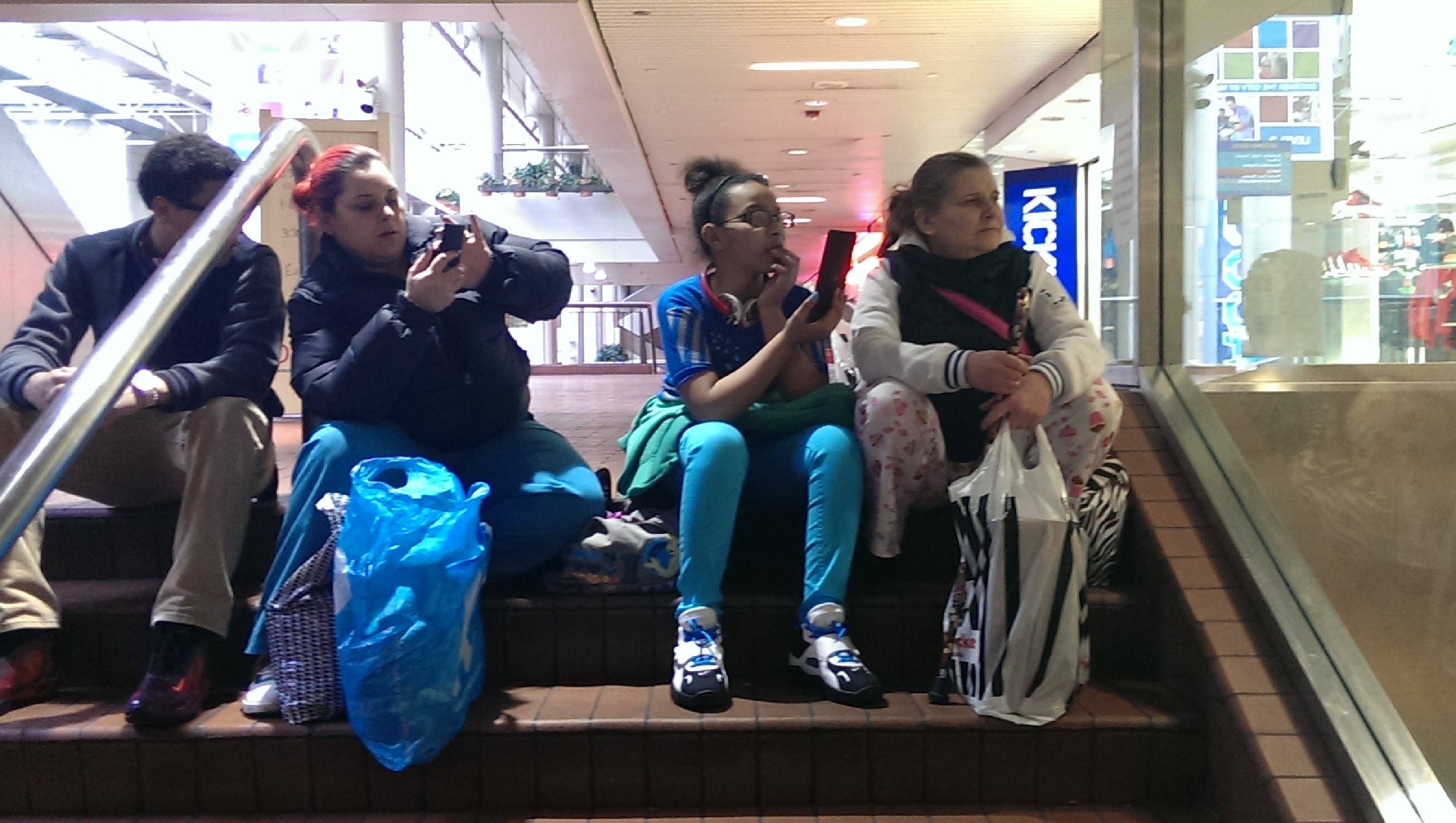
Onlookers (from Left): Jose Mendez, Louisa Santiago, Sayyanah Bailey, and Sherry Sellard.
Photo: Becca Weber
The Onlookers:
Louisa Santiago came with her husband to view dance and see how they could get involved. A security guard pointed them in the direction of the studio after they looked at the bulletin board, and though they found the space was empty, she came back with her kids and her mother another day. “It’s entertainment,” she said, as her family watched Kùlú Mèlé in rehearsal. Her son, Jose Mendez, commented, “The hand movements with the skirts were very entertaining. I’m learning how to dance hip hop and R&B. I will probably come look at this very often.”
His sister, Sayyanah Bailey, added, “It’s motivation; it’s so fun to dance. I learn from my dad because I watch him. He’s teaching me and my brother how to dance. If I was dancing in a place like this, I would feel shy at first, but then I would get the hang of it and feel okay. This is fun.” “You can learn some of your heritage,” added Sherry Sellard, grandmother of the two. That viewing Dance in Public Places was a learning experience was a sentiment echoed by others.
Sofia Papanikolaou, viewing Melissa Diane
I found it interesting, because I’ve never seen anything like that in public. Usually I see dance performances in an auditorium of some sort or on the street. I learned that there is an emphasis in preparation, [because] they spent one hour stretching.
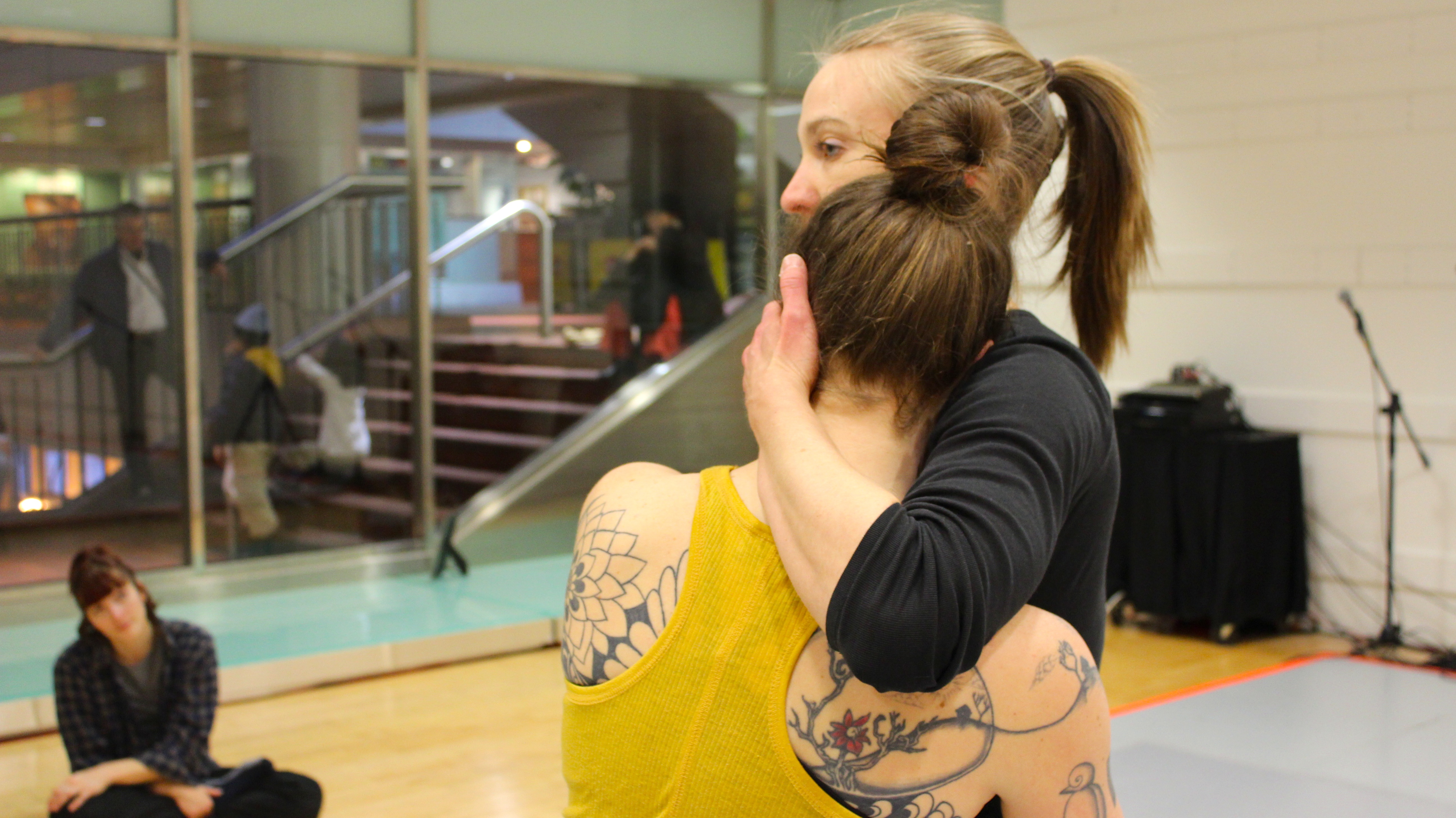
Tori Lawrence + Co. Photo: Tori Lawrence
Biana Levchenko, viewing Tori Lawrence + Co
I did learn that there are different types of dance. I never knew there was such a thing as Dance Film and I thought that it was super clever and unique.
Kelly Matyskiela, viewing Gabrielle Revlock and Nicole Bindler
The rehearsing seemed very unstructured, so I wondered how the routine would look on stage during a performance. From Dance in Public Places, I learned that there are some things that I wouldn’t have considered dance before, that other people do.
Briana Odom, viewing Melissa Diane
I learned that there are more than the styles of dance that are highlighted in the media, like movies and TV shows. I also learned that each dancer takes a piece of choreography and changes it into something totally different by just adding their personal touch to it. Dance in Public Places made me realize all the different talents there are right here in Philadelphia.
Tatyana Butterfield, viewing Somanaut Dance
Their dance caught my attention right away because I love contemporary modern. The music and the dance complimented each other very well as it presented a Zen-like atmosphere where you could become one with your mind, body, and spirit. Dance in Public Places contributed to my understanding of Dance in Philadelphia, because Philadelphia is not comprised of just one form of dance.
Dance in Public Places, an initiative of DanceUSA/Philadelphia, February 1-March 1, 2014.
By Becca Weber
March 2, 2014

